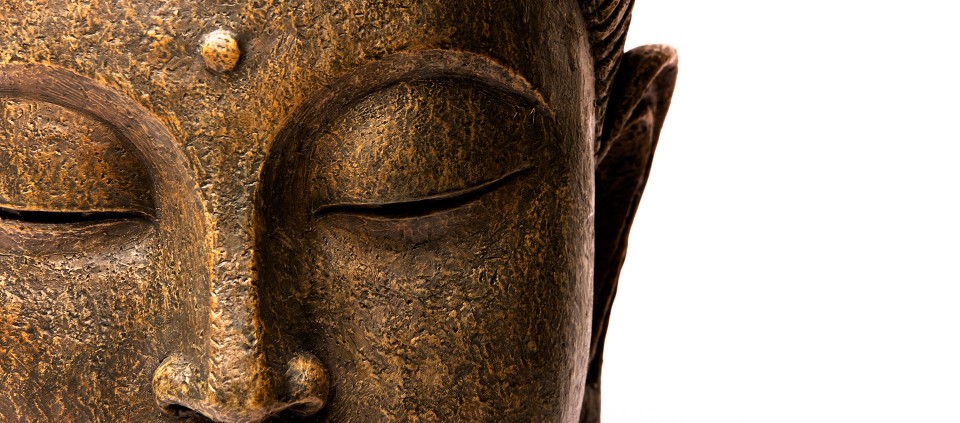How to See with Your Third Eye

All of the Buddha’s teachings are divided into three trainings: wisdom, discipline, and meditation. “Right View” is part of the training of wisdom, and it teaches us how to start seeing things in the right way.
“Right View” in this context does not necessarily mean seeing something visual with our eyes. In the first moment when we see something with our eyes, before any conceptual thoughts arise, we may have some glimpse of the truth. In the next moment, however, we begin to respond to that object based on our emotions and inner conditions.
In the training of darshana, this word “seeing” has more to do with Right View, which is cultivated through the training of wisdom. The more we study and practice, the more we begin to see with our inner wisdom eye.
All the Buddhas have a wisdom eye which is also called the “third eye.” Often in the sacred Buddhist thangka paintings, we can see that the deities are depicted with a third eye on their foreheads. The third eye is located between the other two eyes, and symbolizes that the wisdom eye is open. The buddhas can see so much through their wisdom eye that we are not yet aware of.
Our wisdom eye is not open. What we have instead are these two ordinary physical eyes that we have inherited from our father and mother. These physical eyes are part of our physical “pain body” constituted by our emotions.
We are all familiar with the phrase, “Beauty lies in the eyes of the beholder.” This reminds us that there is no ultimate truth in our visual perceptions. Without a wisdom eye, everything that we see will only be a relative truth. How we measure beauty will be a direct result of our individual karma and emotions. According to these emotions, the same object can have many different values to different people.
Through the training of wisdom, we can begin to see clearly and completely, in a way that we have never seen before. Through the wisdom eye, we can begin to see a more universal or ultimate truth. The essence of Buddhism is this darshana wisdom training.
Cultivating Right View cannot happen through study alone. We must also take these teachings into our meditation and cultivate them through repeated practice and contemplation. This is why Buddha included the training of meditation as one of the three most important trainings along with wisdom and discipline.
The training of discipline, however, is the most important training of all. Through discipline, we learn to bring the training of wisdom and meditation into our lives. This discipline of “ethical conduct” is paramount to the proper integration of wisdom and meditation into every aspect of our lives.
Excerpted from The Wisdom Gone Beyond: Teachings on the Heart Sutra, © 2014, by Lama Migmar Tseten.
Lama Migmar Tseten has served as Buddhist chaplain at Harvard University since 1997 and is founder of the Sakya Institute for Buddhist Studies in Cambridge, Massachusetts.
Full Bio and Programs